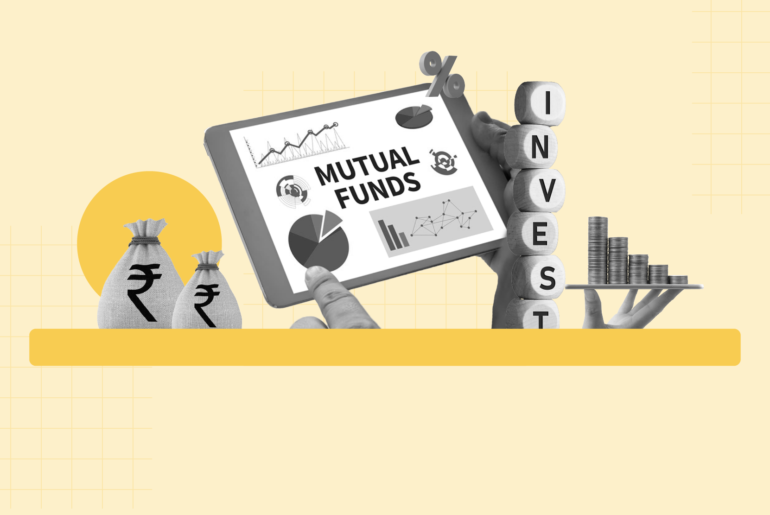Last Updated on May 24, 2022 by Anjali Chourasiya
Here’s the bit about the stock market that some investors might call unfair, In order to access potentially higher returns, you need to accept a higher amount of risk. That means, for potentially higher profits, you need to also accept a higher potential for losses.
Investors who have a higher amount of money that they don’t mind taking a risk with (or people with larger amounts of spare capital) are more likely than others to have the potential to earn higher profits. You have probably heard the maxim: “The rich become richer…”
What do any of these seemingly abstract equations and an overused maxim have to do with debt funds? Well, debt funds are about as safe as it gets with mutual funds. By the equations above, since debt funds are low risk, they have a correspondingly lesser ability to deliver a high volume of earnings. The more you try and play it safe in the markets, the lower is the likelihood of attaining high returns.
However, low risk does mean stable earnings, if not high earnings. Are debt funds for you? Let’s find out.
Table of Contents
What are debt funds?
When you invest in a mutual fund, your capital is pooled with other investors and then invested in various stock market securities. These may be debt securities such as bonds and commercial paper, or may be equities – shares of stock market-listed companies, or a combination of the two. Debt funds are those mutual funds that have a higher percentage of debt investments as their underlying asset.
Debt funds, or debt mutual funds, offer a low risk investment avenue to investors who are risk-averse but they are keen on earning better returns than what fixed income products as bank FDs provide. Debt funds invest a majority of the investor capital in debt securities that provide stability to the portfolio and may have a part-exposure to equities to capture more earnings from the market.
Features of debt funds
The following three features will characterize debt funds from any asset management company,
Less volatile unit pricing
Debt funds usually do not see much volatility in their NAV and unit pricing because these funds invest in debt securities. While the funds’ underlying assets may have fixed maturity dates and fixed interest rates (that will be made along with the capital repayment by the said deadline), investors’ liquidity is not impacted.
Investors may enter or redeem the units anytime they want at the closing NAV price of the day.
Lower risk
Because of less volatile unit pricing, there is a lower risk of the investor making the mistake of buying in at a very high price. Having fixed income securities and debt instruments such as bonds and commercial papers as the underlying assets, debt funds are less risky investments than equity funds and stocks. Provided investors stay invested for a longer-term, there is also a very slim chance that they will have to sell at too low a price.
While the debt securities will continue to provide stable interest on investment, an improving market over time will aid capital appreciation through market-linked exposures. That said, if you need to exit the investment quickly due to some emergency, debt funds are handy as they are very liquid. Low volatility means that you might not exit at a loss.
Lower rate of historical return
If you compare the capital growth that various mutual funds have delivered, you might notice that debt funds witness slower growth in their NAV. However, the growth rate will be steady in most cases, without very drastic dips and spikes like in the stock graph.
This is the tradeoff that investors must consider when it comes to debt mutual funds. Is slower growth but steady growth what you seek out of your investments?
That brings us to the question- Are debt funds ideal for your financial goals? Read further
Are debt funds ideal for your financial goals?
Every individual may have different financial goals. Some may look for regular income, while some may look for quick capital appreciation. Many may be willing to take risks for wealth creation, while others may give capital safety higher importance. Education, marriage, retirement, emergencies, and the list is endless. Luckily, the world of investment is wide and caters to the needs of every individual.
While mutual funds are largely perceived as less risky than direct equity investments, they may still vary in risk profile. And that is why not every mutual fund can make a good choice for your portfolio. In the light of the same, debt funds may provide lower returns but are potential sources of more stable income and suited to the risk-averse than equity funds. Debt funds could also make good choices if you have short-term needs or surplus money that you are deciding what to do with.
For example, you could choose liquid funds (a type of debt fund) to accumulate for college fees. Now, the same fee amount cannot be allocated to equity funds as they are risky and highly volatile. So you observe here that the corpus purpose, timeline, and risk factor play a critical role in deciding what kind of fund you may want to choose to invest in.
You also need to consider two very important factors mentioned below:
Expense ratio
You pay the fund house fees and charges for managing your capital by way of an expense ratio. Be sure to consider this amount while calculating how much you are likely to earn from your debt fund. The amount is not fixed among mutual fund houses.
Taxation
Your investment horizon and tax slab play a role in the taxes you will pay on your capital gains. For a debt fund held for less than 3 yrs, your short term capital gain (STCG) is as per the income tax rate applicable.
Meanwhile, you pay a little over 23% (20% tax + 12% surcharge + 4% cess) irrespective of your tax slab as long term capital gain (LTCG) if you hold debt funds for more than 3 yrs. Additionally, you get indexation benefits which means that purchase cost (of units) can be indexed to the sale date based on the IT Department’s Cost Inflation Index and you end up having to pay much lower tax because you only pay tax on the indexed gains.
With this in mind, it might make sense to consider your tax slab and plan your investment horizon accordingly.
Conclusion
Debt funds can be a good alternative for investors with a low-risk appetite in particular. Debt funds invest a majority of the pooled capital in fixed income securities such as commercial papers and bonds to fetch stable returns for the investors. Given they work by compounding stable earnings, they may be a less-risky option for achieving financial goals.
The NAV (unit cost) of debt funds is not as volatile as equity funds, and therefore, the returns from debt funds are fairly predictable in nature. This quality makes them suited, especially for attaining short-term goals. However, it is imperative that you use the correct selection from among the various offerings within debt funds to maintain a low risk and maximize your earnings.
- SBI Equity Mutual Funds – List of Top Performing Schemes for 2025 - Mar 27, 2025
- Hedge Funds in India: Definition, Types, & Benefits - Mar 27, 2025
- List of Overnight Mutual Funds in India (2025) - Mar 17, 2025




